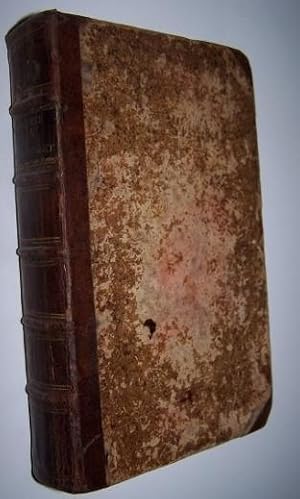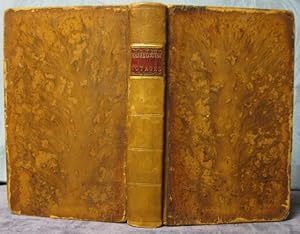Hasselquist Frederik (4 results)
FeedbackSearch filters
Product Type
- All Product Types
- Books (4)
- Magazines & Periodicals (No further results match this refinement)
- Comics (No further results match this refinement)
- Sheet Music (No further results match this refinement)
- Art, Prints & Posters (No further results match this refinement)
- Photographs (No further results match this refinement)
- Maps (No further results match this refinement)
- Manuscripts & Paper Collectibles (No further results match this refinement)
Condition
- All Conditions
- New (No further results match this refinement)
- Used (4)
Binding
- All Bindings
- Hardcover (3)
- Softcover (No further results match this refinement)
Collectible Attributes
- First Edition (3)
- Signed (No further results match this refinement)
- Dust Jacket (No further results match this refinement)
- Seller-Supplied Images (3)
- Not Print on Demand (4)
Language (1)
Free Shipping
- Free Shipping to United Kingdom (No further results match this refinement)
Seller Location
Seller Rating
-
ITER PALAESTINUM ELLER RESA TIL HELIGA LANDET. UTGIFVEN AF CARL LINNAEUS.
Publication Date: 1757
Seller: Books From California, Simi Valley, CA, U.S.A.
£ 19.18
Convert currency£ 10.80 shipping from U.S.A. to United KingdomQuantity: 1 available
Add to basketHardcover. Condition: Good. Bokforlaget Rediviva, Stockholm 1969. Ex-library copy with usual markings. Shows minor wear.
-
ITER PALAESTINUM ELLER RESA TIL HELIGA LANDET. UTGIFVEN AF CARL LINNAEUS
Published by n.p., Stockholm, 1757
Seller: Antiquarian Bookshop, Washington, DC, U.S.A.
First Edition
£ 652.01
Convert currency£ 48.37 shipping from U.S.A. to United KingdomQuantity: 1 available
Add to basketHardcover. Condition: Very Good. First Edition. Very good, in contemporary quarter sheep. Linnaeus sponsored Hasselquist's travels in the Holy Land, and published this book after the author's death. Soulsby 3577. In 1747, Frederic Hasselquist entered the study of his teacher Carolus Linnaeus to announce his decision to go to the Holy Land and explore its natural history. This decision was prompted by a lecture in which Linnaeus complained that the natural history of the Holy Land was almost as little know as that of the remote provinces of India. Hasselquist finally embarked on his journey in 1749; visiting parts of Asia Minor, Egypt, Cyprus and Palestine, making large natural history collections. Unfortunately, his health succumbed to the fatigues of travel, and he died near Smyrna on his way home. His collections did reach Stockholm, and five years after his death his notes were published by Linnaeus under the title Iter Palæstinum, Eller Resa til Heliga Landet, Förrättad Ifrån år 1749 til 1752, which was translated into French and German in 1762 and into English in 1766 (as Voyages and Travels in the Levant, in the Years 1749, 50, 51, 52).;
-
Voyages And Travels In The Levant; In the Years 1749, 50, 51, 52. Containing Observations in Natural History, Physick, Agriculture, and Commerce: Particularly On the Holy Land, and the Natural History of the Scriptures.Published by Order of her Majesty
Published by London: Printed for L.Davis and C.Reymers, 1766., 1766
Seller: D & E LAKE LTD. (ABAC/ILAB), Toronto, ON, Canada
First Edition
£ 1,534.13
Convert currency£ 37.98 shipping from Canada to United KingdomQuantity: 1 available
Add to basketHardcover. Condition: Very Good. 1st Edition. 8vo. pp. 4 p.l., viii, 456 [ie. 350; pp. 269-72 & 308-79 omitted in pagination]. with half-title. folding engraved map (frontis.). contemporary tree calf, rebacked, preserving spine label (occasional stains & light foxing, paper lightly embrowned). armorial bookplate of William Marshall. First Edition of the English Translation of 'the first systematic natural history of the Holy Land'. (Blackmer) Hasselquist undertook his extensive travels in Asia Minor, Egypt, Cyprus, and Palestine, at the urging of Linnaeus, his teacher at Uppsala, who helped him to raise money to finance the journey. He died at Smyrna in 1752 when he was about to return to Sweden with a rich collection of natural history specimens. His valuable journal, observations, and descriptions, were edited by Linnaeus and first published in Swedish in 1757. A Materia Medica and accounts of diseases and remedies are given on pp. 293-394. Prefixed is a biographical sketch of Hasselquist by Linnaeus. Casey Wood p. 380. Cox I p. 230. Hulth p. 106. Röhricht 1435. Soulsby 3582. Tobler p. 130. cfBlackmer 792.
-
Iter Palaestinum eller Resa til Heliga Landet, forrattad ifran ar 1749 til 1752 (.) utgiven af Carl Linnaeus. - ["THE FIRST SYSTEMATIC NATURAL HISTORY OF THE HOLY LAND"]
Seller: Herman H. J. Lynge & Søn ILAB-ABF, Copenhagen, Denmark
First Edition
£ 419.63
Convert currency£ 30.41 shipping from Denmark to United KingdomQuantity: 1 available
Add to basketStockholm, Lars Salvii, 1757. 8vo. In contemporary full calf with five raised bands. Wear to extremities. Annotations and paper-label to pasted down front end-paper. Previous owners (Pehr Dubb) stamps to title-page. "Geo Ross 1757" in contemporary hand to verso of titlepage. Brownspotted throughout. (16), 209, 230-619, (1) pp. Complete. First edition of Hasselquist?s account of his travels in Palestine and the eastern part of the mediterranean being ?The first systematic natural history of the Holy Land? (Blackmer). Here Hasselquist described his travels, observations on the natural world, and encounters with various cultures and peoples along the way. Hasselquist was a student of Linné, who oversaw publication of the work following Hasselquist's death in 1752. Fredrik Hasselquist (1722-1752) was a Swedish naturalist and explorer known for his contributions to botany and zoology. He was born in Törnevalla, Sweden, and studied at Uppsala University, where he developed an interest in natural history. His observations during his travels significantly contributed to the understanding of the flora and fauna of the Levant. Hasselquist died of fever in Smyrna (present-day Izmir, Turkey) in 1752, at the age of 30. Despite his short life his work laid the foundation for future botanical and zoological studies in the region. Soulsby 3577.





![Seller image for Iter Palaestinum eller Resa til Heliga Landet, forrattad ifran ar 1749 til 1752 (.) utgiven af Carl Linnaeus. - ["THE FIRST SYSTEMATIC NATURAL HISTORY OF THE HOLY LAND"] for sale by Herman H. J. Lynge & Søn ILAB-ABF](https://pictures.abebooks.com/inventory/md/md31799867394.jpg)